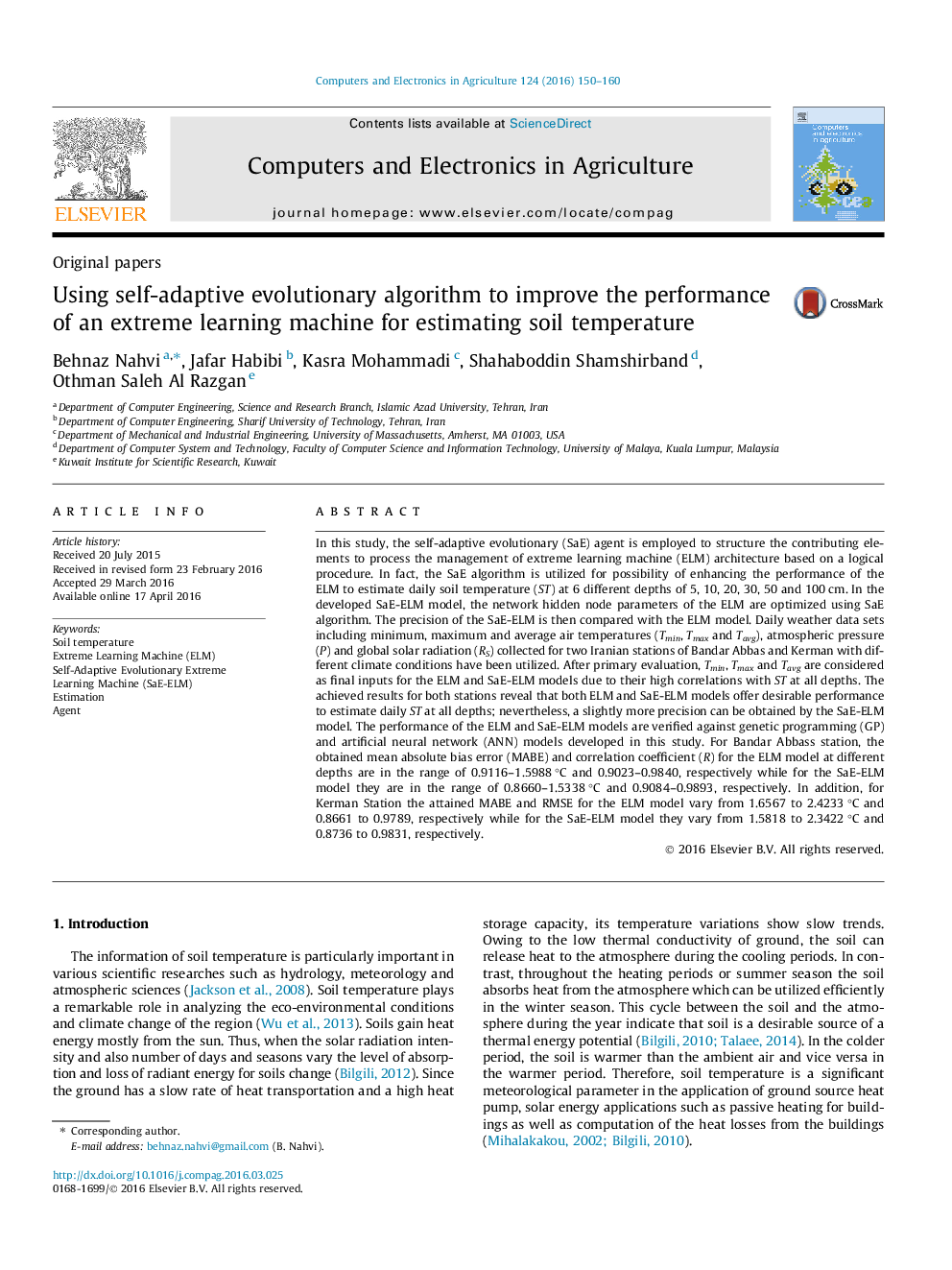| Article ID | Journal | Published Year | Pages | File Type |
|---|---|---|---|---|
| 6540401 | Computers and Electronics in Agriculture | 2016 | 11 Pages |
Abstract
In this study, the self-adaptive evolutionary (SaE) agent is employed to structure the contributing elements to process the management of extreme learning machine (ELM) architecture based on a logical procedure. In fact, the SaE algorithm is utilized for possibility of enhancing the performance of the ELM to estimate daily soil temperature (ST) at 6 different depths of 5, 10, 20, 30, 50 and 100 cm. In the developed SaE-ELM model, the network hidden node parameters of the ELM are optimized using SaE algorithm. The precision of the SaE-ELM is then compared with the ELM model. Daily weather data sets including minimum, maximum and average air temperatures (Tmin, Tmax and Tavg), atmospheric pressure (P) and global solar radiation (RS) collected for two Iranian stations of Bandar Abbas and Kerman with different climate conditions have been utilized. After primary evaluation, Tmin, Tmax and Tavg are considered as final inputs for the ELM and SaE-ELM models due to their high correlations with ST at all depths. The achieved results for both stations reveal that both ELM and SaE-ELM models offer desirable performance to estimate daily ST at all depths; nevertheless, a slightly more precision can be obtained by the SaE-ELM model. The performance of the ELM and SaE-ELM models are verified against genetic programming (GP) and artificial neural network (ANN) models developed in this study. For Bandar Abbass station, the obtained mean absolute bias error (MABE) and correlation coefficient (R) for the ELM model at different depths are in the range of 0.9116-1.5988 °C and 0.9023-0.9840, respectively while for the SaE-ELM model they are in the range of 0.8660-1.5338 °C and 0.9084-0.9893, respectively. In addition, for Kerman Station the attained MABE and RMSE for the ELM model vary from 1.6567 to 2.4233 °C and 0.8661 to 0.9789, respectively while for the SaE-ELM model they vary from 1.5818 to 2.3422 °C and 0.8736 to 0.9831, respectively.
Related Topics
Physical Sciences and Engineering
Computer Science
Computer Science Applications
Authors
Behnaz Nahvi, Jafar Habibi, Kasra Mohammadi, Shahaboddin Shamshirband, Othman Saleh Al Razgan,
